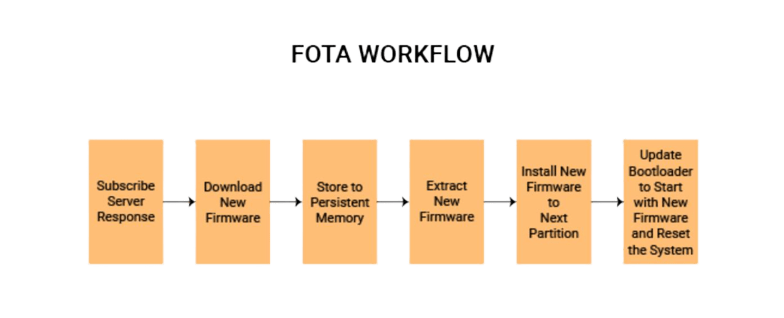Ready-to-Deploy FOTA Micro Stack for Automotive Applications
We have developed a ready-to-deploy FOTA micro stack for expediting the development activities of automotive applications such as In-Vehicle Infotainment System, Digital Instrument Cluster, Digital Cockpit, etc.
Introduction of new software features or update of existing software can be accomplished through the FOTA micro stack. The stack facilitates Cloud based OTA in which the updates can be scheduled at a specific time. And at that time, the binaries are downloaded from the cloud. On system restart, the changes are installed and executed.
End to end implementation of an automotive FOTA solution takes 60-70 days. The ready-to-deploy stack enables the implementation of the FOTA solution within 18 days.
How Does the FOTA Micro Stack Work?
OTA updates are installed in the root file system of the automotive application. For instance, in Linux OS, there are three parts – U-Boot, Kernel and RootFS.
- Whenever the system reboots, it will load the bootloader, kernel and then check which partition to boot with, i.e., partition A or B.
- To update partition A, the firmware is downloaded and stored in persistent memory. The firmware is then extracted and installed in partition A. The system is then rebooted.
- Once it reboots, the same process is followed to update the firmware in partition B.

The FOTA micro stack consists of three modules:
- FOTA Gateway
- Download Engine
- Update Engine
The functions of each module are explained in the diagram below:

Error Handling Features of FOTA Micro Stack
- 1. Error handling on connectivity loss with FOTA Server
- 2. Error handling for firmware version (expected greater version than existing version of firmware)
- 3. Error handling for download failure
- 4. Error handling for installation failure (Recovery)
Smart Cluster Architecture with FOTA Micro Stack
The detailed layered architecture of a smart cluster with the FOTA micro stack implemented is shown below.

FOTA Micro Stack Free Downloadable Flier
Here’s a handy flier that provides an overview of our FOTA micro stack. You can download this for your future reference.

